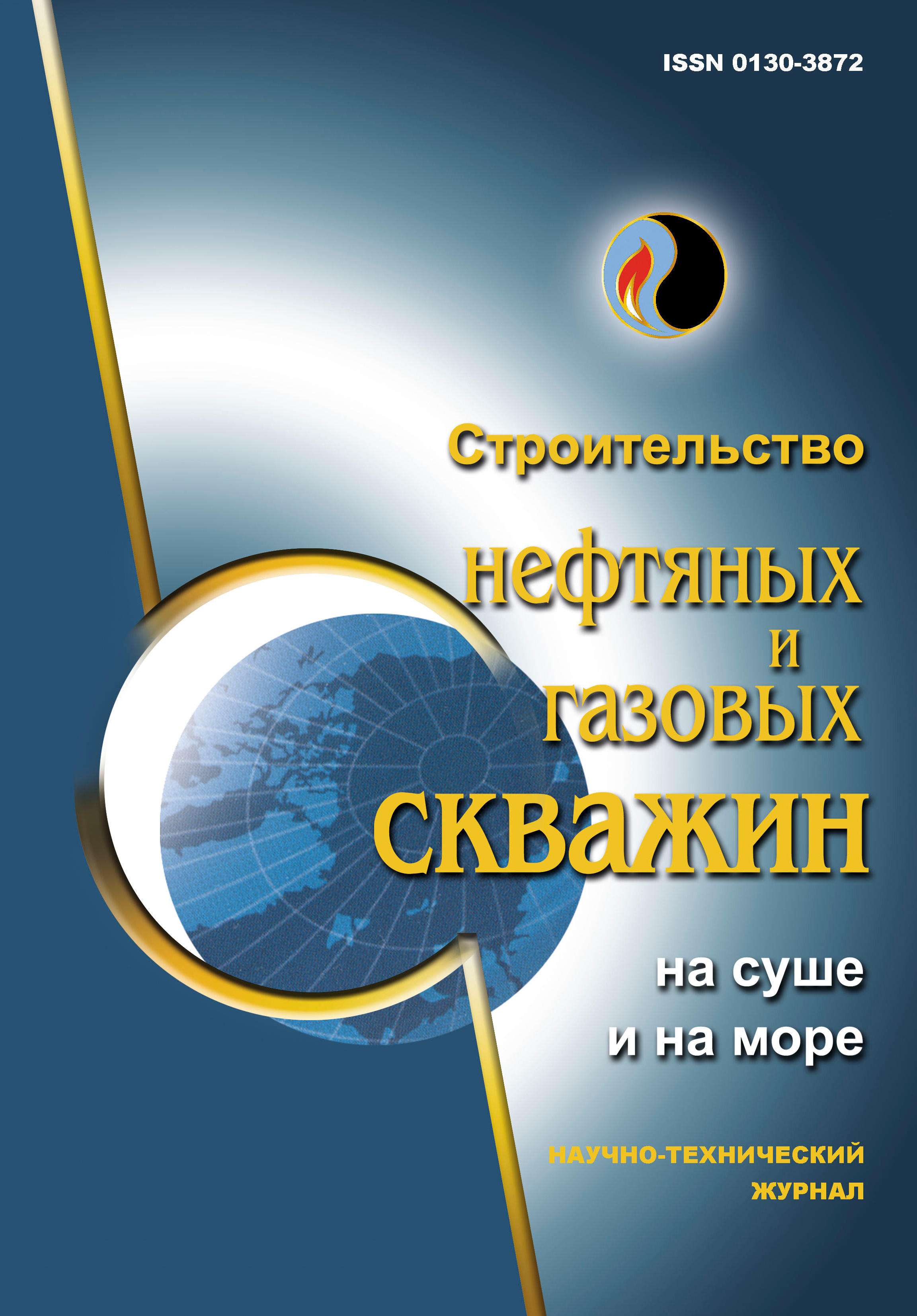Научно-технический журнал
«Onshore and offshore oil and gas well construction»
ISSN 0130-3872

Formation of hydrated inclusion compounds for controlling the state of bonds in cement stone
UDC: 622.245
DOI: 10.33285/0130-3872-2022-4(352)-21-27
Authors:
1 Scientific Research Institute of Pipeline Transport, Moscow, Russian Federation
Keywords: well construction, well cementing, grout cements, cement stone shrinkage, water of hydration, polymer additives, expansion mechanism, hydrate bonds, inclusion compounds, crown ethers
Annotation:
To ensure the tightness of a well lining, it is necessary to ensure the long-term performance of its design. One of the elements that determine a well lining performance is the stable state of the cement stone in the annular and inter-string spaces of the well. The sustainable state of the cement stone includes maintaining its insulating properties under various thermodynamic conditions and sealing contact with boundary surfaces. A change in the state of water and hydrate bonds in the cement stone, accompanied by their transition to the state of an ionic or molecular substance, leads to a weakening and destruction of the cement stone structure. To avoid it, the water in the cement stone should be in the state of matter of the atomic structure. Judging by the nature of hydrate bonds, occurred in the cement stone volume, it is possible to control their state and properties. This provision is realized by the formation of hydrate inclusion compounds in the cement stone based on water and organic compounds, capable of acting as filler (substrate) in hydrated water. Strengthening bonds non-polarity due to the formation of hydrate inclusion compounds based on a combination of water and hydrocarbon compounds makes it possible to control the polarity of bonds in the compounds that make up the cement stone, and, consequently, to control its strength properties, operational durability, and volumetric deformations. It has been experimentally shown that large-sized ionic compounds are able to saturate hydration water based on Portland cement hydration products and change the strength characteristics of the stone, i.e. change the level of polarity in the hydrate bonds of the cement stone.
Bibliography:
1. Belousov V.P., Panov M.Yu. Termodinamika vodnykh rastvorov neelektrolitov. – L.: Khimiya, 1983. – 265 s.2. Glinka N.L. Obshchaya khimiya. – L.: Khimiya, 1981. – 720 s.
3. Kramer F. Soedineniya vklyucheniya: per. s nem. – M.: Inostr. lit., 1958. – 169 s.
4. Xagan M. Klatratnye soedineniya vklyucheniya. – M.: Mir, 1966. – 165 s.
5. Dyadin Yu.A., Udachin K.A., Bondaryuk I.V. Soedineniya vklyucheniya. – Novosibirsk: Izd-vo Novosib. gos. un-ta, 1988. – 93 s.
6. Stid Dzh.V., Etvud Dzh.L. Supramolekulyarnaya khimiya: v 2 t. – M.: IKTs "Akademkniga", 2007. – T. 1. – 480 s.; T. 2. – 895 s.
7. Len Zh.-M. Supramolekulyarnaya khimiya: kontseptsiya i perspektivy. – Novosibirsk: Nauka. Sib. predpriyatie RAN, 1998. – 334 s.
8. Eyzenberg D., Kautsman V. Struktura i svoystva vody. – L.: Gidrometeoizdat, 1975. – 280 s.
9. Erdei-Gruz T. Yavlenie perenosa v vodnykh rastvorakh: per. s angl. – M.: Mir, 1976. – 595 s.
10. Mosin O.V., Ignatov I. Struktura vody i fizicheskaya real'nost' // Soznanie i fizicheskaya real'nost'. – 2011. – T. 16, № 9. – S. 16–31.
11. Nemukhin A.V. Mnogoobrazie klasterov // Rossiyskiy khim. zhurn. – 1996. – T. 40, № 2. – S. 48–56.
12. Sharafutdinov Z.Z., Chegodaev F.A., Sharafutdinova R.Z. Burovye i tamponazhnye rastvory. Teoriya i praktika: sprav. – SPb.: NPO "Professional", 2007. – 416 s.
13. Ratinov V.B., Rozenberg T.I. Dobavki v beton. – M.: Stroyizdat, 1973. – 207 s.
14. Dobavki v beton: sprav. posobie / pod red. V.S. Ramachandrana; per. s angl. T.I. Rozenberg, S.A. Boldyreva. – M.: Stroyizdat, 1988. – 575 s.
15. Paturoev V.V. Polimerbetony. – M.: Stroyizdat, 1987. – 286 s.
16. Butt Yu.M., Rashkovich L.N. Tverdenie vyazhushchikh pri povyshennykh temperaturakh. – M.: Stroyizdat, 1965. – 223 s.
17. Teylor Kh.F. Khimiya tsementa: per. s angl. – M.: Mir, 1996. – 560 s.
18. Cherkinskiy Yu.S. Polimertsementnyy beton. – M.: Stroyizdat, 1984. – 213 s.
19. Sharafutdinov Z.Z., Ippolitov V.V. Proryv plastovykh flyuidov cherez zatsementirovannoe prostranstvo i osnovnye puti ego predotvrashcheniya: v 4 ch. // Stroitel'stvo neftyanykh i gazovykh skvazhin na sushe i na more. – 2008. – № 6. – S. 41–46; № 7. – S. 42–49; № 8. – S. 41–44; № 9. – S. 28–31.
20. Sharafutdinov Z.Z., Krylov V.I., Bogdanova Yu.M. Upravlenie protsessami formirovaniya tsementnogo kamnya na osnove predstavleniy supramolekulyarnoy khimii // Burenie i neft'. – 2009. – № 12. – S. 8–10.
21. Sharafutdinov Z.Z., Krivoborodov Yu.R. Polimertsementnye sistemy dlya stroitel'stva neftyanykh i gazovykh skvazhin // Stroitel'stvo neftyanykh i gazovykh skvazhin na sushe i na more. – 2017. – № 3. – S. 37–50.
22. Kirov M.V. Residual entropy of ice nanotubes and ice layers // Physica A: Statistical Mechanics and its Applications. – 2013. – Vol. 392, Issue 4. – P. 680–688. – DOI: 10.1016/j.physa.2012.10.041